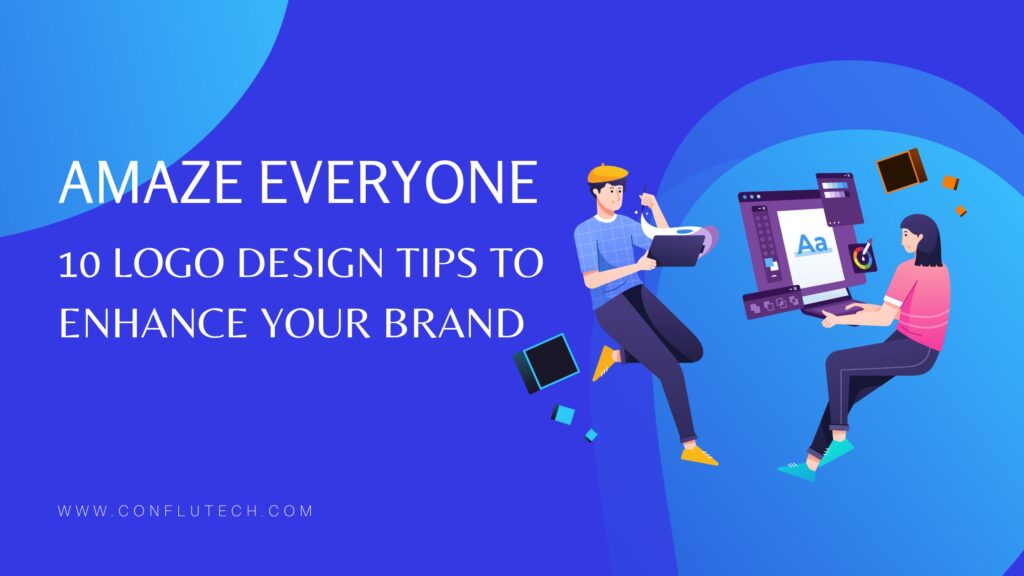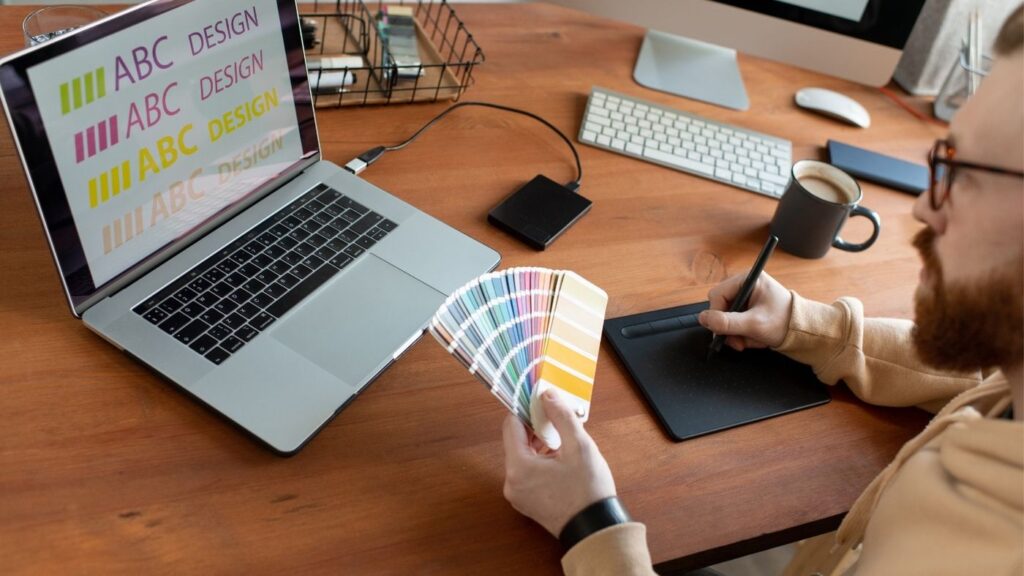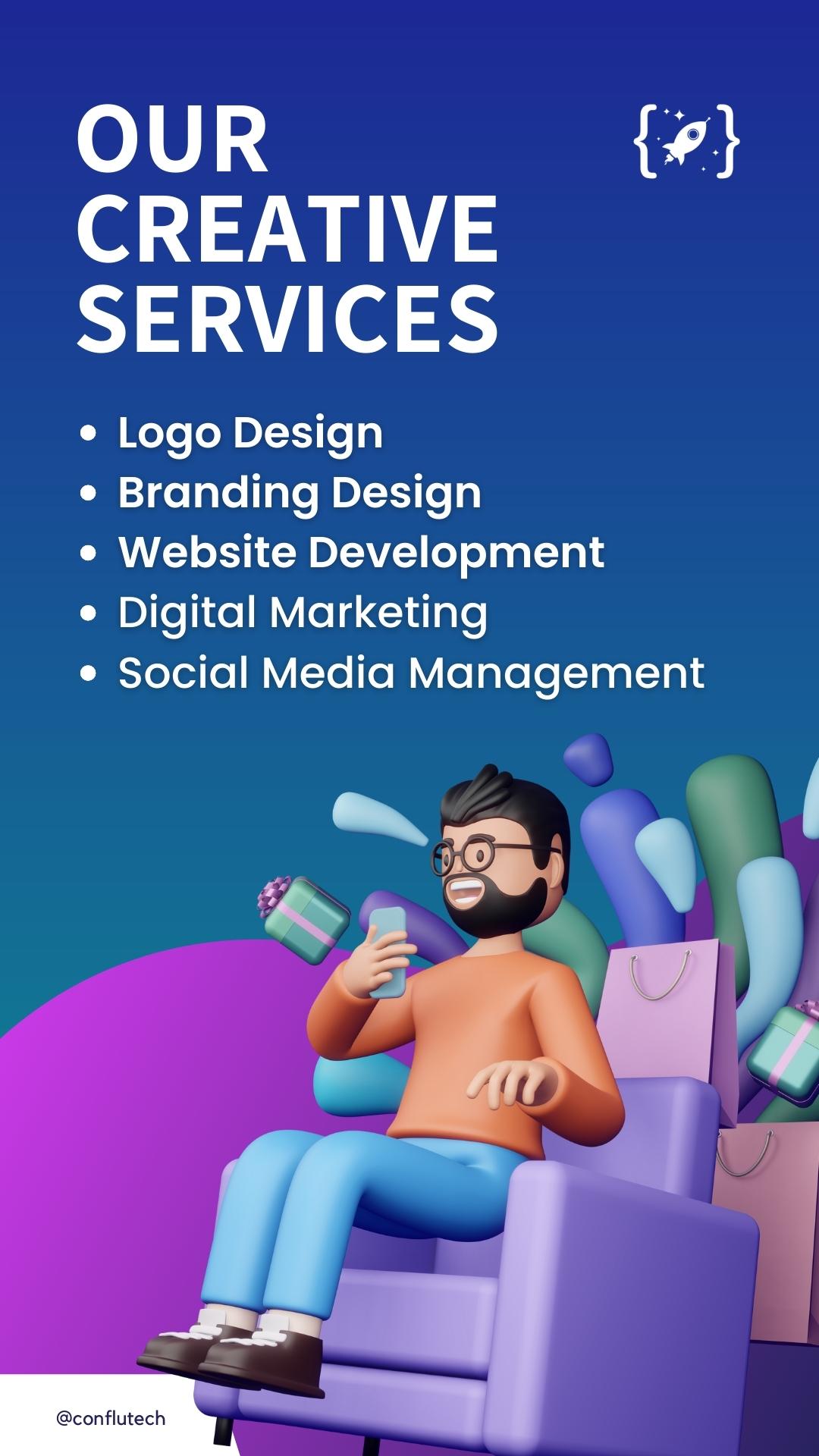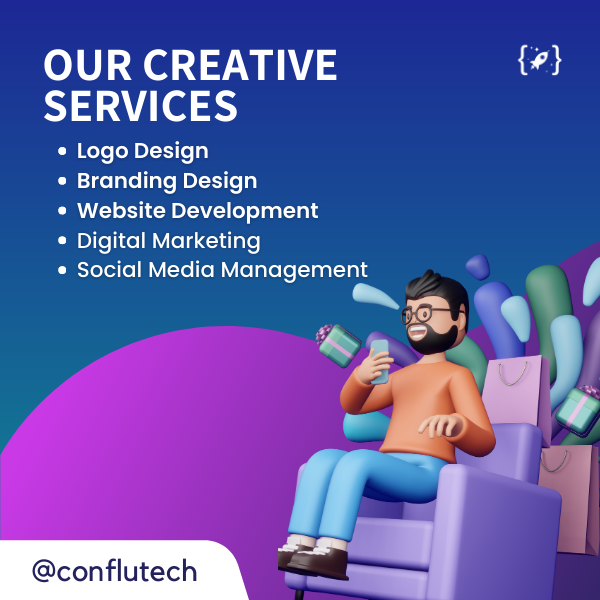
Logo design is one of the most crucial aspects of a brand identity. The logo represents your business and serves as an introduction to your target audience. It’s essential to create a memorable logo that can effectively communicate your message, values, and personality.
Without a logo, your brand can struggle to cut through the noise and stand out from the competition. A strong logo design will help make your brand easily recognizable and increase consumer confidence in your product or service. Here are 10 logo design tips you can use to amaze everyone with an eye-catching emblem that will enhance your brand identity.
Know Your Brand
 The first step to designing a great logo that enhances your brand is to know your brand inside and out. You can’t design a logo if you don’t have a clear understanding of what your business stands for, who your target audience is, and what sets you apart from the competition. Spend some time conducting market research, defining your brand values and mission statement, and identifying key differentiators that make you unique.
The first step to designing a great logo that enhances your brand is to know your brand inside and out. You can’t design a logo if you don’t have a clear understanding of what your business stands for, who your target audience is, and what sets you apart from the competition. Spend some time conducting market research, defining your brand values and mission statement, and identifying key differentiators that make you unique.
Once you have a clear understanding of your brand identity, it’s time to start brainstorming ideas for your logo. Consider using colors and fonts that align with your brand personality and messaging. Additionally, think about incorporating visual elements or symbols that represent what makes your business stand out in the marketplace.
Remember that ultimately, the goal of any successful logo design is to create an image that resonates with consumers on an emotional level while also communicating the essence of who you are as a business. By taking the time to truly know and understand your brand before beginning any design work, you’ll be better equipped to create a logo that accurately represents everything you stand for as an organization.
Simplicity is Key
 The most memorable logos are the ones that are easily recognizable and easy to understand. A simple design allows for easy scalability across different mediums and sizes, making it more effective in reaching a wider audience.
The most memorable logos are the ones that are easily recognizable and easy to understand. A simple design allows for easy scalability across different mediums and sizes, making it more effective in reaching a wider audience.
One way to achieve simplicity in logo design is by using minimal colors. Limiting the color palette can create a cleaner look and make the logo more versatile. Too many colors can also be overwhelming and distract from the overall message of the brand.
Another important factor in keeping things simple is font choice. Choosing a clean and readable font can help communicate your message clearly without any confusion or extra elements that might detract from the overall design. Overall, simplicity not only creates an effective logo but also makes it easier for customers to remember your brand for years to come.
Color Choice Matters
 Color is an essential aspect of logo design that greatly influences how people perceive your brand. Selecting the appropriate color scheme can help you communicate your brand’s personality, values, and message effectively. It’s important to understand color theory when choosing colors for your logo. Each color has a different meaning and evokes certain emotions in people. For example, blue is often associated with trustworthiness, while red signifies passion and excitement.
Color is an essential aspect of logo design that greatly influences how people perceive your brand. Selecting the appropriate color scheme can help you communicate your brand’s personality, values, and message effectively. It’s important to understand color theory when choosing colors for your logo. Each color has a different meaning and evokes certain emotions in people. For example, blue is often associated with trustworthiness, while red signifies passion and excitement.
It’s also worth considering the cultural connotations of colors when designing logos for international audiences. Colors have different meanings across cultures, so it’s vital to research the cultural significance of each color in your target market before finalizing your logo design. Additionally, it’s crucial to ensure that the selected colors are compatible with each other as well as other elements such as typography.
In conclusion, selecting the right color palette for your logo is crucial in creating a strong brand identity that resonates with customers. Color choice should be based on careful consideration of factors such as color psychology and cultural implications while ensuring that they complement each other harmoniously.
Utilize Negative Space
 Negative space is an often-overlooked design element that can have a big impact on your logo. By using the empty spaces around and within the design, you can create a more dynamic and memorable image. Negative space can also help to convey hidden meanings or messages in your logo.
Negative space is an often-overlooked design element that can have a big impact on your logo. By using the empty spaces around and within the design, you can create a more dynamic and memorable image. Negative space can also help to convey hidden meanings or messages in your logo.
One classic example of negative space is the FedEx logo, which uses the white space between the “E” and “x” letters to create an arrow shape. This subtle design detail not only adds visual interest but also suggests movement and forward motion – perfect for a delivery company.
When using negative space in your logo design, it’s important to consider how it will look in different sizes and formats. A design that looks great on a computer screen may not be as effective when printed on a small business card or billboard. Test your logo in various contexts to ensure that it remains clear and legible at all sizes.
Research Other Logos
 Researching other logos is a crucial step in the logo design process. It helps you understand what works and what doesn’t in terms of visual elements, typography, color schemes, and overall style. This knowledge can be used to create a unique and effective logo that stands out from the crowd.
Researching other logos is a crucial step in the logo design process. It helps you understand what works and what doesn’t in terms of visual elements, typography, color schemes, and overall style. This knowledge can be used to create a unique and effective logo that stands out from the crowd.
When researching other logos, it’s important to look at both successful and unsuccessful designs. By analyzing failed designs, you can learn from their mistakes and avoid them in your own work. On the other hand, studying successful logos can give you inspiration for new ideas and approaches.
Additionally, it’s essential to research logos within your industry or niche. Understanding the visual language of your target audience will help you create a logo that resonates with them and effectively communicates your brand message. Take note of common themes or trends in these logos while also striving to differentiate yourself from competitors through unique design elements.
Balance Text & Shapes
 When designing a logo, it’s important to achieve balance between text and shapes. One should not overpower the other as it can lead to an unappealing design. A good way to achieve balance is by using negative space effectively. This refers to the area around shapes and letters that do not contain any design elements. By strategically placing these elements, you can create a harmonious composition that catches the eye.
When designing a logo, it’s important to achieve balance between text and shapes. One should not overpower the other as it can lead to an unappealing design. A good way to achieve balance is by using negative space effectively. This refers to the area around shapes and letters that do not contain any design elements. By strategically placing these elements, you can create a harmonious composition that catches the eye.
Another way to achieve balance is by experimenting with different layouts. For example, you could try placing your text above or below your shape instead of next to it. You could also experiment with different font sizes or weights in relation to your shape size. Remember that every element in your logo plays a role in its overall impact, so take time to consider how they all work together.
Ultimately, achieving balance between text and shapes requires careful consideration and experimentation during the design process. With practice, you’ll learn how to create logos that are visually appealing while conveying your brand identity effectively.
Consider Scalability
 Scaling a logo is an important consideration when designing a logo. A good logo should be easily scalable, meaning that it can be resized without losing its quality or legibility. This is especially important for businesses looking to use their logos across multiple mediums, such as billboards and business cards. A scalable logo ensures that the integrity of the design remains intact regardless of its size.
Scaling a logo is an important consideration when designing a logo. A good logo should be easily scalable, meaning that it can be resized without losing its quality or legibility. This is especially important for businesses looking to use their logos across multiple mediums, such as billboards and business cards. A scalable logo ensures that the integrity of the design remains intact regardless of its size.
When designing a scalable logo, it’s essential to pay attention to the details of the design. The font used in the logo should be legible even when scaled down to small sizes, and any intricate elements should be simplified or removed entirely if they do not translate well at smaller sizes. Additionally, designers may consider creating multiple versions of their logos optimized for different mediums.
Overall, scalability is an essential factor in creating a successful logo design. A well-designed and scalable logo will ensure that your brand remains recognizable and consistent across all mediums while also providing versatility for future growth and expansion opportunities.
Choose Fonts Carefully
 It is crucial to choose the right font that complements your brand’s personality and message. Avoid using too many fonts in one design, as it can create confusion and clutter. Stick to two or three fonts at maximum for a clean and simple look.
It is crucial to choose the right font that complements your brand’s personality and message. Avoid using too many fonts in one design, as it can create confusion and clutter. Stick to two or three fonts at maximum for a clean and simple look.
Also, consider the legibility of the font you choose. Fancy calligraphic fonts may look appealing but can be challenging to read from afar or in smaller sizes. It is best to opt for clear, bold fonts that are easy to read and recognize.
Lastly, ensure that the font you choose aligns with your brand’s overall style and aesthetic. A modern tech company would benefit from using clean sans-serif fonts, while a vintage-inspired business would do well with elegant serif fonts. By taking the time to select appropriate fonts for your logo design, you can enhance your brand identity and make it stand out among competitors.
Avoid Clichés
 Clichés are overused phrases or expressions that have lost their originality and impact. Using clichés in logo design can make your brand look unoriginal and uninspiring, which could negatively affect your business’s image. Therefore, it is important to avoid clichéd design elements like lightbulbs for ideas, arrows for growth, and globes for global reach.
Clichés are overused phrases or expressions that have lost their originality and impact. Using clichés in logo design can make your brand look unoriginal and uninspiring, which could negatively affect your business’s image. Therefore, it is important to avoid clichéd design elements like lightbulbs for ideas, arrows for growth, and globes for global reach.
To create a unique and memorable logo that stands out from the crowd, you should aim to be creative with your design choices. Instead of relying on clichés, try brainstorming fresh ideas and experimenting with different shapes, colors, fonts, and imagery. You can also draw inspiration from your brand’s values, mission statement, target audience, or industry trends.
Remember that a great logo doesn’t have to be complicated or flashy; sometimes simplicity is key. By avoiding clichés and creating an authentic design that reflects your brand’s personality and purpose, you’ll be able to amaze everyone with a timeless logo that enhances your business’s image for years to come.
Test the Logo Design
 Testing the logo design is an essential part of the logo creation process. Before finalizing a logo, it is necessary to test its efficacy on different mediums and sizes. There are many factors that play a crucial role in determining the effectiveness of your logo, such as color scheme, typography, size, and shape. By testing your logo on business cards, brochures, websites or social media platforms will give you an idea of how well it translates and resonates with your customers.
Testing the logo design is an essential part of the logo creation process. Before finalizing a logo, it is necessary to test its efficacy on different mediums and sizes. There are many factors that play a crucial role in determining the effectiveness of your logo, such as color scheme, typography, size, and shape. By testing your logo on business cards, brochures, websites or social media platforms will give you an idea of how well it translates and resonates with your customers.
Testing allows you to make necessary adjustments and ensure that your logo looks great in all applications. It also helps you avoid costly mistakes like choosing a design that doesn’t work well when scaled down for smaller uses like website icons or business cards. Moreover, testing can help you identify any potential copyright infringement issues before they become problematic.
Conclusion
In conclusion, designing a logo that enhances your brand is crucial for any business. A well-designed logo can convey the essence of your brand and make it stand out from competitors. You should strive to create a unique and memorable logo that reflects your values, vision, and mission.
Remember to keep it simple yet impactful – avoid cluttered designs or too many elements that could dilute the message. Also, think about how your logo will look in different contexts, such as on social media profiles or merchandise. It should be versatile enough to adapt to different sizes and formats without losing its visual appeal.
Finally, don’t underestimate the power of color psychology when designing your logo. Different colors evoke different emotions and associations, so choose wisely based on what you want your brand to represent. With these tips in mind, you’re well on your way to creating a stunning logo that will amaze everyone who sees it!










